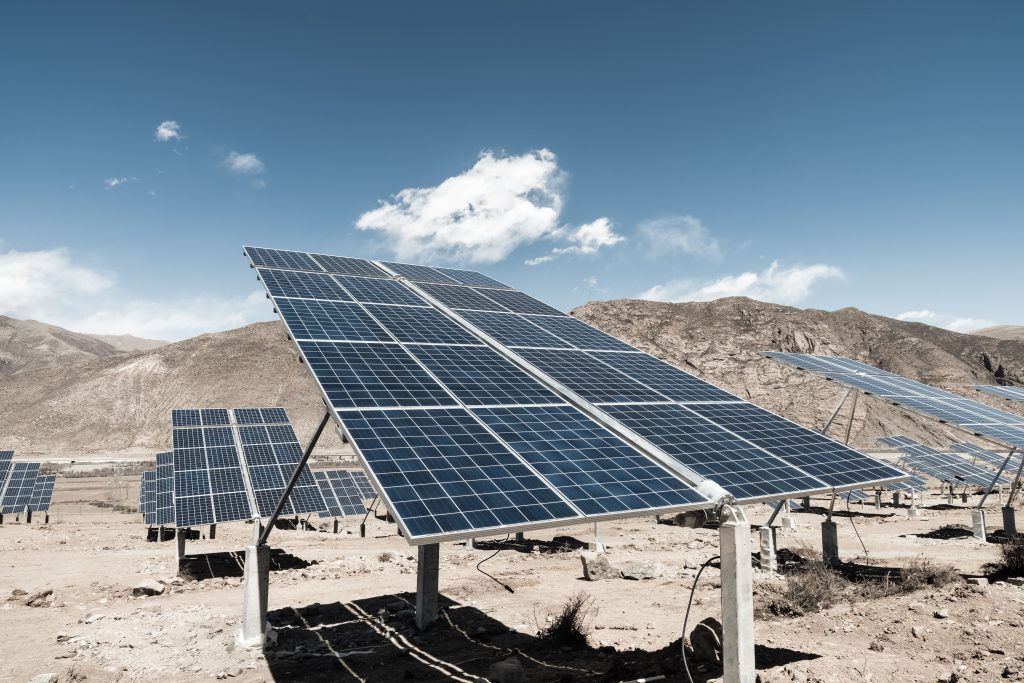British Columbia solar power generation proving successful

by Ellsworth Dickson
ONE MIGHT THINK THAT SOLAR POWER IS BEST IN PLACES LIKE CALIFORNIA. YES, THAT’S TRUE; HOWEVER, SOUTHEASTERN BRITISH COLUMBIA IS SPROUTING A VARIETY OF SOLAR PROJECTS THAT ARE WORKING JUST FINE, THANK YOU.
For example, Kimberley has over 300 days of sunshine each year and is the site of the former Sullivan Mine. Now known as the SunMine, the solar farm is located on the Teck Resources Sullivan Mine concentrator site which has been fully reclaimed. Teck provided land and site infrastructure and a $2 million funding for the project.

More funds were raised via BC’s Clean Energy Fund that provided another $1 million through the EcoSmart Foundation, a non-profit foundation based in Vancouver that promotes economically and ecologically smart projects between the public and private sectors. Other supporters chipped in, including the Columbia Basin Trust and the Southern Interior Development Initiative Trust.
To cap it off, a 2011 referendum saw Kimberley voters approve the city borrowing $2 million. For larger solar installation, assembling several partners can make it work. SunMine, costing $5.3 million, is BC largest solar project with 4,032 solar cell modules mounted on 98 solar trackers which follow the sun’s movements. The project, which has won a number of awards, is first solar project in BC to sell power to the BC Hydro power grid. Teck recently bought out the city’s share so they can start the Phase 2 development.
“I think there are probably several of these sites around (e.g. the mine up the hill by Greenwood) that would be excellent opportunities for development,” said John McArthur, who is on the Board of the BC Sustainability Energy Association and is the Community Liaison in the Kootenay District.
“It is also near FortisBC lines and even a BC Hydro transmission line,” he added. “The Regional District of Central Kootenay is also having to seal a contaminated site outside Salmo (not a pit, but good sun exposure) that would be ideal for a solar farm. There are lots of opportunities for a business that makes a profit and helps the environment.”
The BC Sustainable Energy Association (BCSEA) is a volunteer-based, charity that supports the sustainable production, distribution, and consumption of energy in British Columbia and beyond.
Jim Jacobsen, BC Sales Manager for Empower Energy, also a director of BCSEA, told Resource World that there are a variety of funding sources for solar projects, some of which can be used in combination:
• Community initiatives such as a co-operative model or a bulk buy program where the costs are shared
• Regular business loans from banks (The technology is proven, for larger projects (over 100 kW) the company will need a long term firm power purchase agreement from a utility like BC Hydro, FortisBC or one of the municipal utilities like the City of New Westminster.)
• Provincial and federal partnerships
• Accelerated capital cost allowance (CCA) for investments in clean energy generation
Regional grants or low interest loans such as Columbia Basin Trust “Some projects could be self-funding where the firm putting in the system puts up the money and recoups their cost over time from the electricity sales,” said Jacobsen. “After a period of, say, 15 or 20 years, the asset belongs to the property owner and they get the future income.”
McArthur added that, in the case of self-funding large scale solar developments, there are several possible models. “Firms actually may look to lease the land in addition to selling the power at a guaranteed rate for the length of the contract,” he said. “The power can be sold back to the utility, to a local government or as a community solar project where individuals can buy a percentage of the power (they purchase x number of solar modules) to offset their consumption. In the same way the panels could be shared via virtual net metering where third party commercial sites could buy green energy.”
“While there are regulatory challenges, there is a possibility for large commercial businesses to enter into a power purchasing agreement with the utility to produce their own power with solar energy,” said Jacobsen.
“Currently under BC Hydro, there is a restriction to no more than 100 kW of solar. For large consumers of energy this is not nearly large enough to make a significant impact. Consider demand charges where commercial customers pay very expensive rates when they exceed a consumption amount.”
He added that there is an exciting possibility for Indigenous communities to take control of their own energy requirements and develop community solar farms to generate their own power in their communities and potentially sell the surplus power back to the utility.
Empower Energy has built a number of solar projects, ranging from 7.6 kW residential installations to 200 kW commercial solar farms – in total over 1,300,000 watts.
There are other successful solar farms in southeast BC such as the Nelson Community Solar Garden which is unique in that the project is a centralized solar array where members of the community have invested in the solar energy project on a per panel basis. Thus, the electricity generated is credited to the subscriber’s electric bills in proportion to their investment for 25 years. The Solar Garden was developed through Nelson Hydro’s EcoSave Energy Retrofits Program. With 248 solar modules, the project generates approximately 60 kW.
Solar panels have also been installed on the roofs of the Balfour Seniors’ Centre, the Balfour Community Hall and the Balfour Golf Course clubhouse. After the solar energy heats and powers the buildings, reducing utility bills in the process, any excess power is sold to Nelson Hydro.
Successfully operating solar farms in the Kootenays of south-eastern BC are not the only BC locales seeing solar projects being developed. Just to the west, numerous solar projects have been built in the sunny Okanagan region of south-central BC and other suitable provincial locations. Economically viable and good for the planet – what’s not to love?
